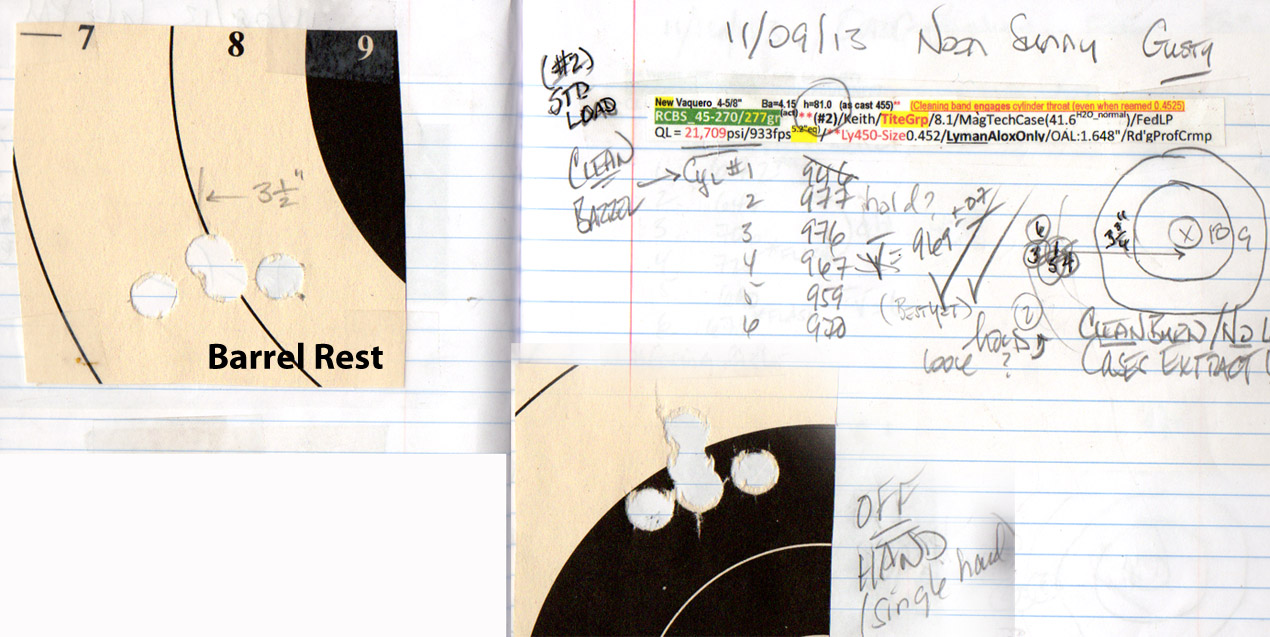Howdy
The cylinder of a revolver is the pressure vessel, and ultimately, no matter how heavily the frame is built, it is the cylinder that must be able to take the pressure generated when a cartridge is fired.
Both of these revolvers are chambered for 45 Colt. Although the New Frontier at the top of this photo, and the Blackhawk at the bottom share many features, the cylinder of the Blackhawk is heftier.
In this photo the New Frontier cylinder is at the left, a 2nd Gen SAA cylinder is at the right (please forgive how messy it looks), and the Blackhawk cylinder is in the center. The New Frontier cylinder is 1.654 in diameter, the SAA cylinder is 1.652 in diameter. The Ruger cylinder 1.727 in diameter. Now notice how much steel there is between the chambers at their thinnest spots.
Because the Ruger cylinder is larger, the chambers were able to be spaced out a little bit further. They average about .060 between chambers at the thinnest point. The New Frontier cylinder is averaging only about .040 between chambers at their thinnest points, the SAA is averaging about .045 between chambers at their thinnest points. (Note: this particular New Frontier shipped in 1965, so it would qualify as a 2nd Gen Colt. The SAA in question shipped in 1973. The discrepancy in dimensions is fairly typical of Colts that shipped in different years.)
The other thing to be aware of is Colts have the cylinder locking slots directly in line with the center of the chambers, resulting in very little steel between the bottom of the slot and the chamber below. I do not have a number handy, but it is considerably less than .040. Indeed, when a cylinder fails, the failure usually starts at that thin spot under the slot and propagates forward and back from there.
Just like happened with this antique Merwin Hulbert cylinder.
Rugers on the other hand have the locking slot located slightly off center from the center of the chamber, to provide more steel between the bottom of the slot and the underlying chamber.
Bottom line: personally I would not subject a New Frontier to any more pressure than I would a Colt SAA. Personally, I am fine with the 14,000 PSI max recommended by SAAMI. Rugers are a different story, that is why many reloading manuals have "Ruger Only" loads. My old Speer manual has a section labeled 45 Colt for Ruger and Contender Only. Speer does not specify the Max pressure for these loads, they only say roughly between standard 45 Colt pressures and 44 Magnum pressures (36,000 psi Max). You can do the math.

